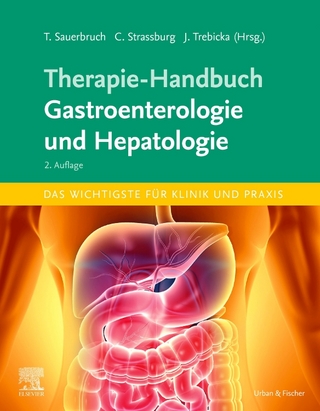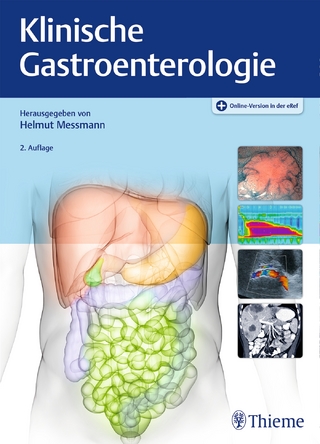
Pharmacology of Intestinal Permeation I
Springer-Verlag Berlin and Heidelberg GmbH & Co. K
978-3-540-13100-7 (ISBN)
- Titel ist leider vergriffen;
keine Neuauflage - Artikel merken
The pharmacologist's interest in the problem of intestinal permeation is twofold: on the one hand, this process determines thebioavailability of drugs and contributes significantly to the pharmacokinetics and toxicokinetics of xeno- biotics; on the other hand, the pharmacodynamic effects of many drugs are manifested in a significant alteration of the physiological process of intestinal permeation.
1 Morphology of the Intestinal Mucosa..- A. Introduction.- I. General Considerations.- II. Heterogeneity of Intestinal Epithelium.- B. Morphological Techniques.- C. The Mucosal Interface.- I. Surface Morphology of Small Intestine.- II. Surface Morphology of Large Intestine.- D. The Enterocyte.- I. The Striated Border.- II. The Apical Cell Coat and Cell Membrane.- III. The Cores of Microvilli and the Terminal Web.- IV. Other Enterocyte Surfaces.- V. The Enterocyte Cytoplasm.- VI. The Precursor Cells of the Crypt and Epithelial Dynamics.- VII. Special Features of Large Bowel Enterocytes.- E. Other Cell Types of Intestinal Mucosa.- I. Goblet Cells.- II. Intestinal Endocrine Cells.- III. Paneth Cells.- IV. Tuft Cells.- V. M Cells.- VI. Intraepithelial Lymphocytes.- VII. Globule Leukocytes.- F. Deeper Layers of the Intestine.- I. Lamina Propria.- II. Muscle Layers and Their Autonomic Innervation.- III. The Serosa.- G. Conclusion.- References.- 2 Intestinal Permeation and Permeability: an Overview..- A. Introduction.- B. Diffusion Processes.- C. The Intestine.- D. Passage of Substances Across Biologic Membranes.- I. Simple Diffusion.- II. Specific Transport Mechanisms.- III. Persorption.- E. Intestinal Permeation.- References.- 3 Permeability and Related Phenomena: Basic Concepts.- A. Introduction.- B. Passive Transport of Nonelectrolytes in Solution.- I. Nonequilibria Determining a Passive Net Flux.- II. Kinetics of Polar Solute Passage Driven by a Concentration Difference.- III. Kinetics of Nonpolar Solute Passage Driven by a Concentration Difference.- IV. Calculation of the Relative Values of the Permeability Coefficients of a Substance Across Two Membranes in Series.- C. Passive Transport of Univalent Electrolytes.- I. Kinetics of the Passive Net Transport off Univalent Electrolytes Across a Porous Membrane.- II. Transmembrane Potentials.- III. Transepithelial Potentials.- D. Transport Across Biological Membranes.- I. Passive Transport of Polar Nonelectrolytes Through Biological Membranes.- II. Passive Transport of Polar Electrolytes Through Biological Membranes.- E. Passive Transport by Carrier Facilitation.- I. Kinetics of Carrier-facilitated Transport.- II. Calculation of the Apparent Affinity Constant.- III. Saturation Kinetics.- IV. Substrate Competition.- V. Countertransport.- F. Passive Transport of Water.- I. Driving Forces.- II. The Hydrophilic Pores and Their Radius.- III. The Reflection Coefficient of Staverman.- IV. Solvent Drag.- G. Active Transport.- I. Identification.- II. Dependence of Water Transport on Metabolism.- III. Countercurrent Exchange.- IV. Thermodynamic Efficiency.- References.- 4 Methods for Investigation of Intestinal Permeability.- A. Introduction.- B. In Vivo Techniques.- I. In Conscious Animals.- II. In Anesthetized Animals.- C. In Vitro Techniques.- I. Isolated Loops.- D. Modifications of the Permeant.- I. Artificial Sugar Compounds.- II. Artificial Amino Acid Analogs.- III. Radioisotopes.- References.- 5 Vascular Perfusion of Rat Small Intestine for Permeation and Metabolism Studies.- A. Introduction.- B. Isolated Intestine with Lymph Collection.- I. Historical Aspects.- II. Development of Procedure.- III. Description of Procedure.- IV. Evidence for Sustained Viability.- V. Perfusate Composition During Recirculation.- VI. Applications.- C. Autoperfused Intestinal Segment In Vivo.- I. Description of Basic Procedure.- II. Specialized Techniques and Adaptations.- III. Applications.- D. Concluding Remarks.- I. Advantages of the Isolated Intestinal Preparation.- II. Advantages of the Autoperfused Intestinal Preparation.- References.- 6 The Use of Isolated Membrane Vesicles in the Study of Intestinal Permeation.- A. Introduction.- B. Methods for Membrane Isolation.- I. Brush Border Membranes.- II. Basolateral Plasma Membranes.- III. Enzyme and Polypeptide Content of Isolated Brush Border and Basolateral Membranes.- IV. Morphology and Orientation of Isolated Brush Border and Basolateral Membranes.- C. Methods for Analysing Transport Properties of Isolated Membrane Vesicles.- D. Transport Studies ..- I. Systems Involved in Primary Active Transport.- II. Systems Involved in Secondary Active Transport.- E. Energetics and Kinetics.- F. Studies with Isolated Membrane Vesicles on the Physiological Regulation of Transepithelial Transport.- G. Conclusions.- References.- 7 The Transport Carrier Principle.- A. The Carrier Concept in Relation to Intestinal Transport.- I. Early Development of the Carrier Concept.- B. The Kinetic Approach to Membrane Carriers.- I. The Simple Pore and Simple Carrier.- II. Coupled Transport Systems.- III. Chemiosmotic Coupling.- C. The Thermodynamics and Energetics of Membrane Carrier Systems.- I. Carrier Asymmetry.- II. Energetics of Countertransport Systems.- III. Energetics of Cotransport.- References.- 8 Energetics of Intestinal Absorption.- A. Introduction.- B. Special Fuels as Sources of Energy.- C. Membrane Transport and Oxidative Phosphorylation.- D. General Features of Energy Utilization.- E. Basal Energy Requirements of Tissues.- F. The Energetics of Absorption Are the Energetics of Movement Along a Multistep Pathway.- G. Variable Patterns of Fuels Available to the Small Intestine.- H. Intestinal Metabolism of Nutrients During Absorption.- I. Energetics of Brush Border Transport Processes.- K. Influence off Circulation of Epithelial Transport: General Principles.- I. Convective Transport.- II. Cellular Transport: Influence of Vascular Flow on Power Requirements.- III. A Simple Model.- L. Effects of Circulation on Epithelial Transport in the Steady State.- M. Influence of Circulation on Wash-out from Epithelium.- N. Influence of Circulation on Sodium Fluxes Across Vascularly Perfused Intestine.- I. Na Fluxes Across the Small Intestine.- II. Na Fluxes Across the Colon.- III. Factors Affecting Na Fluxes Across Frog Intestine.- O. Effects of Vascular Flow on Size of Tissue Fluid Compartments.- I. Measurement of Extracellular and Interstitial Space.- II. Influence of Vascular Flow on Permeability of the Pathway Between Epithelium and Blood.- P. Conclusions.- References.- 9 Polarity of Intestinal Epithelial Cells: Permeability of the Brush Border and Basolateral Membranes.- A. Introduction.- B. Functionally Polarized and Unpolarized Cells.- C. The Epithelial Layer as a Selective Barrier.- D. Brush Border Membrane: Morphology, Chemical Composition, and Biochemical Characteristics.- I. Morphology.- II. Chemical Composition.- III. The Brush Border as a Selective Membrane.- E. Basolateral Membrane: Chemical and Biochemical Organization.- I. Chemical Composition.- II. Enzyme Content.- F. Permeability of Brush Border and Basolateral Membranes.- G. Factors Affecting Membrane Permeability.- H. Concluding Remarks.- References.- 10 Electrical Phenomena and Ion Transport in the Small Intestine.- A. Introduction.- B. Transepithelial Electrical Parameters and Ionic Fluxes in the Small Intestine.- I. Ionic Conductance and its Structural and Functional Correlates . 316 II. Ionic Fluxes.- C. Pathways of Ion Transport in the Small Intestine.- I. The Cellular Pathway.- II. The Paracellular Pathway.- D. Analysis of Intestinal Electrical Parameters in Terms of Electrical Equivalent Circuits.- E. Na+-Coupled Transport of Organic Solutes by the Small Intestine.- I. Transepithelial Effects: The Na+ Gradient Hypothesis.- II. Intracellular Effects: The Electrical Potential Profile of the Absorptive Cell.- III. Equivalent Circuit Analysis: Is the Na+/K+ Exchange Pump Rheogenic?.- IV. Transapical Sugar Transport: Energetics and Stoichiometry.- F. The Regulation of Ion Transport in the Small Intestine.- I. Cyclic Nucleotides and Intestinal Transport: Secretion.- G. Conclusion.- References.- 11 Intestinal Permeation of Water.- A. Introduction.- B. Historical Concepts of Intestinal Fluid Absorption.- C. Formal Description of Water Transfer.- I. General Principles.- II. Diffusion.- III. Filtration.- IV. Osmosis.- V. Interaction Between Solute and Solvent Fluxes.- D. Passive Water Transport.- I. Diffusional Water Permeability.- II. Osmotic Water Permeability.- III. Rectification of Osmotic Water Flow.- IV. Route of Diffusional and Osmotic Water Flow.- V. Water Flow Driven by a Hydrostatic Pressure Gradient.- E. Active Water Transport.- I. The Series Membrane Model.- II. Hypertonic Interspace Mechanisms (Local Osmosis Theories) 431 III. Countercurrent Exchanger Model.- F. Relation Between Intestinal Blood Flow and Water Absorption.- G. Conclusion.- References.- 12 Intestinal Permeability to Calcium and Phosphate.- A. Introduction.- B. Calcium Transport.- I. Brush Border Membrane.- II. Basolateral Membranes.- C. Phosphate Transport.- D. Mechanism of Action of 1,25-Dihydroxycholecalciferol.- I. Pharmacology of the Receptors for 1,25-Dihydroxycholecalciferol 479 II. Regulation of Transport Mediated by a Nuclear Action of Vitamin D.- III. Regulation of Lipid Metabolism by Vitamin D.- IV. Calcium Binding Proteins.- V. Membrane-Bound Calcium Binding Protein.- VI. Calcium-Dependent Adenosine Triphosphatase.- VII. Adenylate Cyclase.- E. Vitamin D-Independent Regulation of Intestinal Calcium Absorption.- F. Summary.- References.- 13 Protein-Mediated Epithelial Iron Transfer.- A. Introduction.- B. Mucosal Uptake, Storage, and Transfer of Iron.- I. Experimental Models.- II. Choice of the Experimental Conditions and Iron Test Doses.- III. Molecular Aspects of Iron Absorption: Search for Mucosal Iron Carriers.- IV. Studies in Purified Fractions of Mucosal Epithelium and Mucosal Cell Suspension.- V. Morphological Studies.- C. Regulation of Iron Absorption.- I. The Significance of Mucosal Iron Binding Proteins.- II. Luminal Factors.- D. Heavy Metal Interaction with the Iron Transfer System: Sites of Interaction.- E. Conclusions.- References.- 14 Intestinal Absorption of Heavy Metals.- A. Introduction.- B. Experimental Problems.- C. General Characteristics of Heavy Metal Absorption.- I. Kinetics.- II. Role of Mucosal Metal Retention.- III. Specificity of Absorption Mechanisms.- IV. Chemical Form of Absorbed Metals.- V. Effects of Age.- D. Absorption of Some Individual Metals.- I. Cadmium.- II. Zinc.- III. Lead.- IV. Copper.- V. Mercury.- VI. Other Metals.- E. Summary and Conclusions.- References.- 15 Intestinal Permeability of Water-Soluble Nonelectrolytes: Sugars, Amino Acids, Peptides.- A. General Functions of the Enterocyte.- B. Intestinal Permeability to Sugars.- I. Simple Diffusion.- II. Facilitated Diffusion and Active Transport.- III. Enzymes Related to Sugar Transport.- IV. Sugar Binding Sites.- V. The Role of Brush Border and Basolateral Membranes in Sugar.- Transport.- VI. Energetics of Sugar Transport.- C. Intestinal Permeability to Amino Acids and Peptides.- I. Specific Transport Systems of l- and D-Amino Acids.- II. Interactions Between Amino Acid and Sugar Transport.- III. Absorption and Transport of Peptides.- D. Concluding Remarks.- References.- 16 Pharmacologic Aspects of Intestinal Permeability to Lipids (Except Steroids and Fat-Soluble Vitamins).- A. Introduction.- B. Brief Outline of the Physiology of Intestinal Permeability to Lipids.- I. Permeation from the Intestinal Lumen (Fat Absorption).- II. Permeation from the Plasma Pool (Uptake and Metabolism of Plasma Free Fatty Acids).- C. Mechanisms by which Drugs May Affect the Intestinal Permeability to Lipids.- I. Interference with Intraluminal Events of Fat Absorption.- II. Disturbance of Intestinal Mucosal Integrity.- III. Interference with Intracellular Events of Intestinal Lipid and Lipoprotein Metabolism.- IV. Interactions with Intestinal Metabolism of Plasma Free Fatty Acids.- D. Agents which Affect the Intestinal Permeability to Lipids in a More Complex Manner.- I. Ethanol.- II. Hormones.- III. Cytostatic Agents.- IV. Dietary Fiber.- E. Concluding Remarks.- References.- 17 Intestinal Absorption of the Fat-Soluble Vitamins: Physiology and Pharmacology.- A. Introduction.- B. Lipid Digestion and Absorption.- C. The Fat-Soluble Vitamins.- I. Vitamins A.- II. Vitamins D.- III. Vitamins E.- IV. Vitamins K.- D. Hydrolysis of Esters of the Fat-Soluble Vitamins.- I. Intraluminal Digestion.- II. Membrane Digestion of Fat-Soluble Vitamin Esters.- E. Role of Bile Salts in Fat-Soluble Vitamin Absorption.- F. Route of Transport of Fat-Soluble Vitamins from the Intestine.- I. Lymphatic Route.- II. Portal Venous Route.- G. Enterohepatic Circulation of the Fat-Soluble Vitamins.- H. Intestinal Uptake of the Fat-Soluble Vitamins.- I. Vitamin A.- II. Vitamin D.- III. Vitamin E.- IV. Vitamin K.- V. Absorption of the Ubiquinones.- J. Summary of Intestinal Absorption of Fat-Soluble Vitamins.- K. Nonnutrient Substances which Interfere with Fat-Soluble Vitamin Absorption.- I. Bile Salt Sequestrants.- II. Nonabsorbale Lipids.- III. Drugs Affecting Small Intestinal Mucosal Morphology and Metabolism.- IV. Other Drugs Which Cause Steatorrhoea.- L. Other Effects of Drugs on Fat-Soluble Vitamin Absorption.- M. Summary of Drug Effects on Fat-Soluble Vitamin Absorption.- References.
| Reihe/Serie | Handbook of Experimental Pharmacology / Pharmacology of Intestinal Permeation ; 70 / 1 |
|---|---|
| Co-Autor | W. McD. Armstrong |
| Zusatzinfo | biography |
| Verlagsort | Berlin |
| Sprache | englisch |
| Gewicht | 1615 g |
| Themenwelt | Medizinische Fachgebiete ► Innere Medizin ► Gastroenterologie |
| Medizinische Fachgebiete ► Innere Medizin ► Hepatologie | |
| Medizin / Pharmazie ► Medizinische Fachgebiete ► Pharmakologie / Pharmakotherapie | |
| Medizin / Pharmazie ► Pflege | |
| Medizin / Pharmazie ► Pharmazie ► PTA / PKA | |
| ISBN-10 | 3-540-13100-0 / 3540131000 |
| ISBN-13 | 978-3-540-13100-7 / 9783540131007 |
| Zustand | Neuware |
| Informationen gemäß Produktsicherheitsverordnung (GPSR) | |
| Haben Sie eine Frage zum Produkt? |
aus dem Bereich


